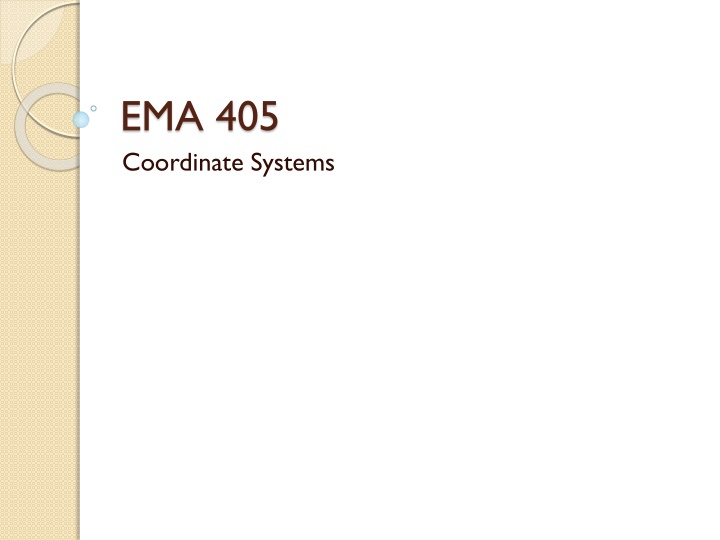
ANSYS Coordinate Systems and Elements
Explore the importance of various coordinate systems in ANSYS for geometry localization, results analysis, and element orientation. Learn why element systems are crucial for materials like wood and how nodal coordinates play a role in radial force orientation. Engage in practical exercises to apply concepts effectively.
Download Presentation

Please find below an Image/Link to download the presentation.
The content on the website is provided AS IS for your information and personal use only. It may not be sold, licensed, or shared on other websites without obtaining consent from the author. If you encounter any issues during the download, it is possible that the publisher has removed the file from their server.
You are allowed to download the files provided on this website for personal or commercial use, subject to the condition that they are used lawfully. All files are the property of their respective owners.
The content on the website is provided AS IS for your information and personal use only. It may not be sold, licensed, or shared on other websites without obtaining consent from the author.
E N D
Presentation Transcript
EMA 405 Coordinate Systems
Introduction There are many coordinate systems in ANSYS Global and Local: used to locate geometry items (nodes, keypoints, etc.) Display: determines systems in which geometry is displayed Nodal: degree of freedom directions and nodal results Element: material properties and element results Results: transforms nodal or element results for listing or display (general postprocessor) Working plane: used for drawing geometric primitives
Results Coordinates General Postprocessor/Options for Output For cylindrical, x-direction is r-direction, y-direction is theta direction, z direction is axial direction
Why do we need these Element system: consider wood elements with grain at 45 degrees Easiest to define E separately in grain direction and perpendicular direction (rotate element system 45 degrees) y x
Why do we need these? Orienting geometry elements Rectangles are always oriented relative to working plane To draw rectangle such as the one below, rotate the working plane
Why do we need these? Nodal coordinates What if we have a set of forces oriented radially Just select nodes on perimeter, change nodal coordinate system to cylindrical, and then set Fx
Exercise Only radial displacements p Inner radius=5 cm Outer radius=10 cm Angular extent = 45 degrees E=200 GPa =0.3 Pressure=1 MPa Only radial displacements
Exercise p=1 MPa E=200 GPa =0.3 Inner radius is fixed Inner radius = 5 cm Outer radius = 10 cm 2 R pt =# o F of nodes = t thickness = R outer radius o
